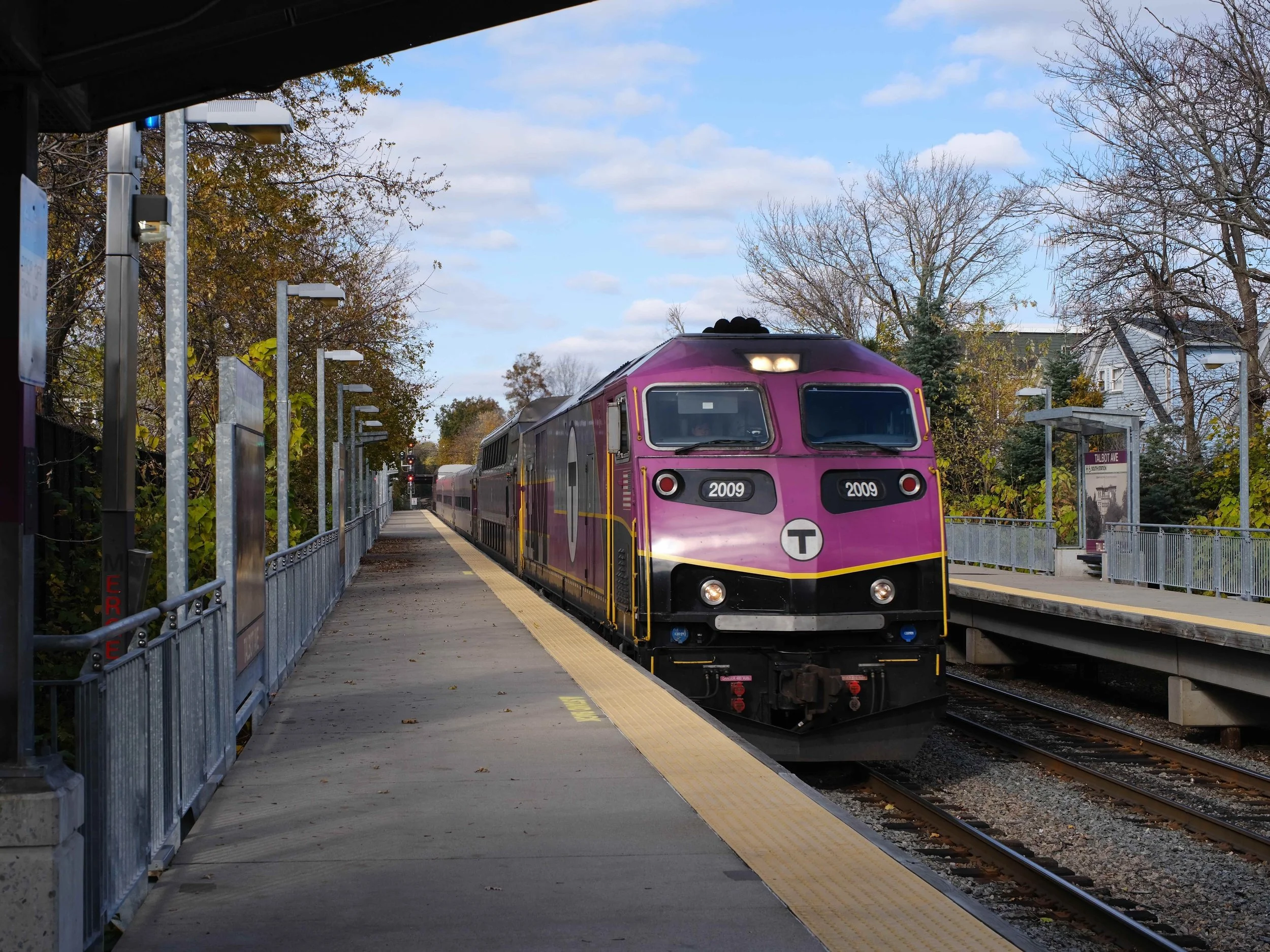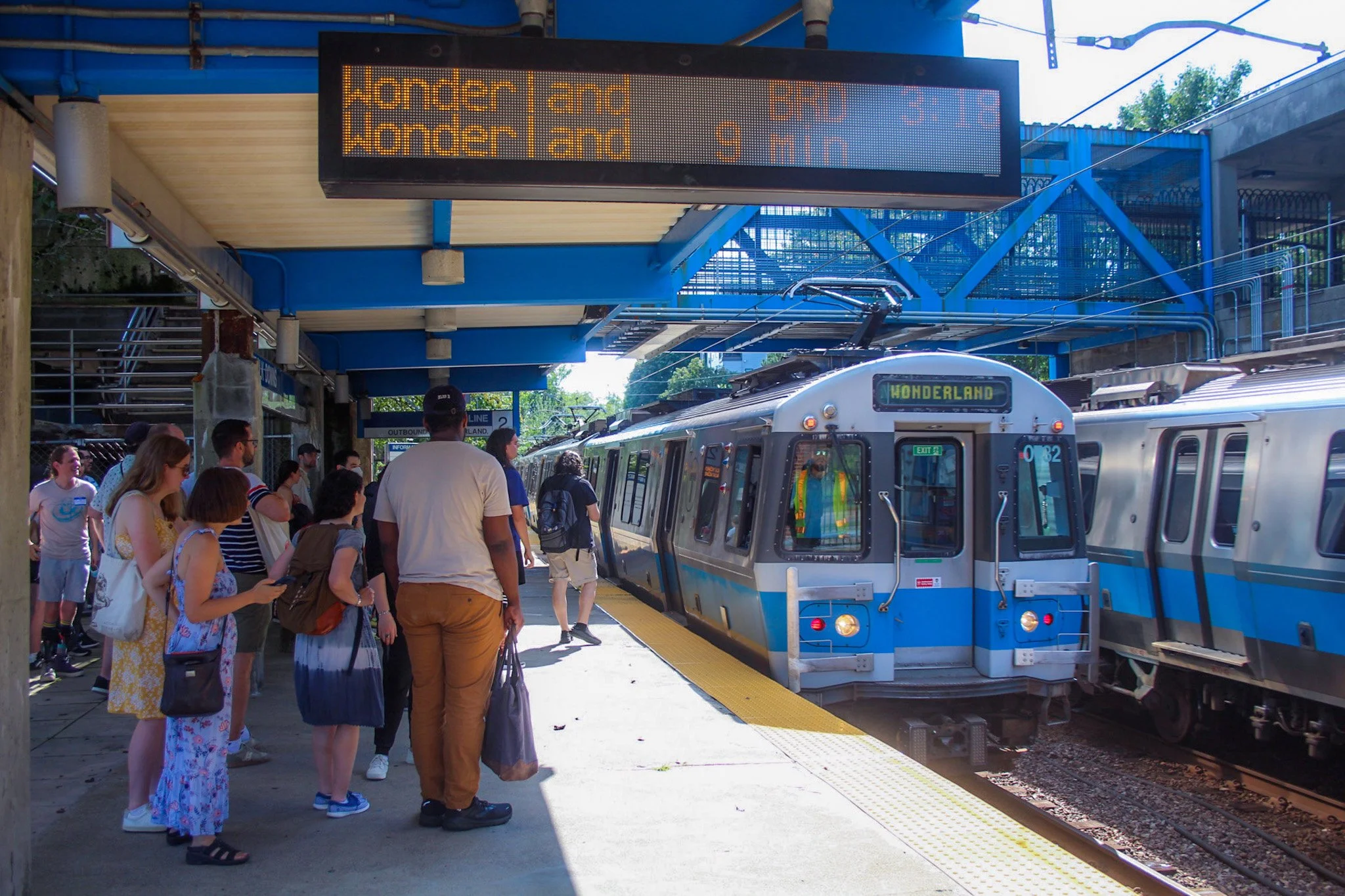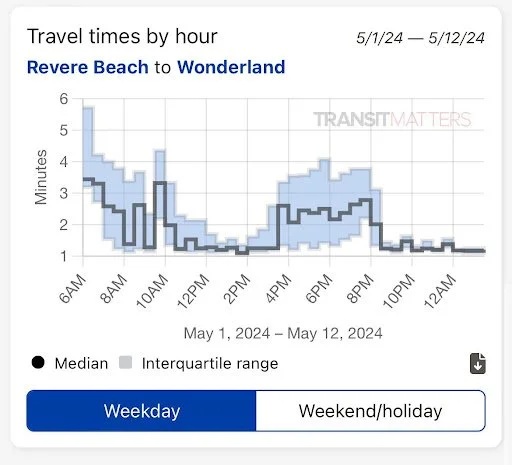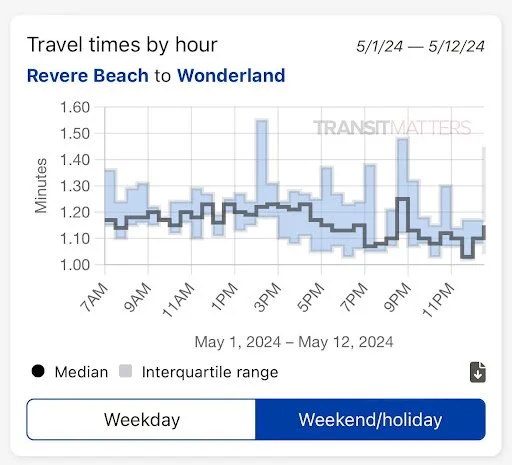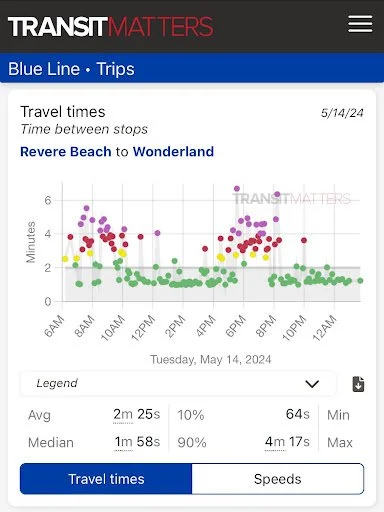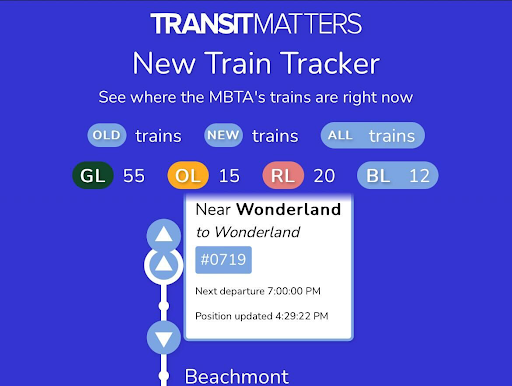
Media Statement: TransitMatters Celebrates the First Real Steps Towards Regional, Electrified Service on the Fairmount Line
"This monumental step represents the first real commitment to the Regional Rail vision laid out five years ago. [TransitMatters is] excited that the T is partnering with Keolis to test new technology that allows us to electrify the service faster and bring tangible benefits to riders.”
BOSTON, July 25, 2024 — TransitMatters is excited to celebrate the MBTA Board's approval of Commuter Rail operator Keolis’s plan to introduce battery-electric trains to the Fairmount Line by 2028. This landmark decision sets the stage for more frequent, fast, and reliable service, bringing us closer to a decarbonized and modernized regional rail network.
Today’s vote marks the first significant investment toward the Regional Rail vision. The Fairmount Line was one of three lines, along with the Newburyport/Rockport line to Beverly, that the MBTA’s then-board endorsed for Regional Rail service in 2019. As the fastest-growing Commuter Rail line, with over 100% of pre-COVID level ridership, the Fairmount Line is moving toward 20-minute service by 2028. This will provide subway-style frequencies and a high-quality transit option to communities that have long gone without the transit options they deserve.
"This monumental step represents the first real commitment to the Regional Rail vision laid out five years ago. We're excited that the T is partnering with Keolis to test new technology that allows us to electrify the service faster and bring tangible benefits to riders," said Jarred Johnson, Executive Director of TransitMatters.
"Keolis's innovation proposal will make a world of difference to communities along the Fairmount Line with fast, frequent, and reliable service. It's the first real step toward Regional Rail and a meaningful down payment on an entirely new Regional Rail system for the Commonwealth. We applaud Keolis and the MBTA for their vision here and look forward to seeing similar vision throughout the upcoming operator reprocurement process," stated Jackson Moore Otto, Regional Rail Lead.
Introducing battery-electric trains to the Fairmount Line is a significant milestone in the MBTA’s efforts to transform the Commuter Rail system. The new service is expected to reduce fuel consumption by 1.6 million gallons and cut carbon dioxide emissions by 17,700 tons annually compared to diesel trains. Fairmount Line riders will have modern trains that will allow for faster, smoother, quieter trips and more reliable service.
"This pilot delivers on the Regional Rail vision despite the T's funding challenges. We appreciate the hard work of the General Manager and his team, the folks at Keolis, and the Rail Transformation for making this happen," added Johnson.
This pilot project is a significant step forward for the Fairmount Line and a scalable model for electrification across the entire commuter rail network. It will allow the MBTA to move existing equipment to other lines and use spare BEMUs for further pilots.
"Regional Rail has the power to revolutionize how people get around Eastern and Central Massachusetts. This announcement, along with the addition of 30-minute service on the Fairmount Line and most hours on the Newburyport/Rockport trunk paired with real investments in 'no regrets' infrastructure across the network, are encouraging steps that show real progress on Regional Rail," said Tim Lawrence, Board President of TransitMatters.
We are grateful to our partners at the Fairmount Indigo Transit Coalition for their tireless advocacy. We applaud the T and Keolis for their vision in advancing this innovative and realistic proposal. Regional Rail is coming, and it can’t come soon enough.
For more information about the Regional Rail advocacy and the vision behind this transformative initiative, please visit TransitMatters Regional Rail Advocacy.
For media inquiries, please e-mail media@transitmatters.org.
###
TransitMatters Labs Launches MBTA Shutdown Tracker
We hope this tool will help riders and increase transparency regarding the successes and failures of MBTA shutdowns this year. Transparency is paramount, and we hope the Shutdown Tracker further educates riders on the system and assists them in advocating for change.
BOSTON, May 29, 2024 — In late 2023, the MBTA announced its ambitious plan to eliminate all speed restrictions by the end of 2024.
Since the announcement, the TransitMatters Labs team has conducted ad hoc analysis on a per-shutdown basis, analyzing data and determining what benefits, or lack thereof, riders experience post-shutdown.
Tracking MBTA Shutdowns
Given the overwhelming number of shutdowns scheduled for this year, conducting case-by-case analyses for each one started to feel unsustainable. That's when we devised a solution—the Shutdown Tracker! We designed this app to provide riders with all the information they need right at their fingertips, making tracking shutdowns much more convenient.
The Shutdown Tracker displays a comprehensive snapshot of scheduled and already completed shutdowns. Users can click every shutdown listed in the app to unveil specific details, giving them in-depth access to fine details for every instance. The underlying analysis hinges on data from a radius of seven days, centered on the shutdown date. Shutdowns cause improvements and challenges, influencing several metrics. With our tracker, riders can examine the impact on travel times, dwells, and headways.
Despite the unproductive shutdowns of the past—we’re looking at you 2022 Orange Line shutdown—this app is here to reassure riders that shutdowns can lead to improved rides, as many have so far this year.
If you’re curious about when the upcoming shutdowns are or are having trouble keeping track of changes, we’ve thought of you! The Shutdown Tracker charts all shutdowns onto an exportable schedule and lets you add it to your calendar app for reference. It will automatically update when things change.
We hope this tool will help riders and increase transparency regarding the successes and failures of MBTA shutdowns this year. Transparency is paramount, and we hope the Shutdown Tracker further educates riders on the system and assists them in advocating for change.
If you notice any issues or want to send any other feedback, let us know at labs@transitmatters.org. If you want to support our efforts to build useful tools and tell stories with data, please consider becoming a member.
TransitMatters Analysis: Blue Line Speeds up post-shutdown; operations hurdles remain
The T fixed track-related slow zones on the Blue Line, resulting in 3 minutes of travel time savings (although still 2 minutes slower than February 2023). The T also suffers from operational issues at Wonderland during peak periods, hampering performance.
BOSTON, May 17, 2024 — On March 15, the MBTA announced that it would shut down sections of the Blue Line throughout April for the following dates:
Between Maverick and Wonderland from April 17 to 21
Between Airport and Wonderland from April 22 to April 28 (though this ended up being extended to April 30)
Plagued with slow zones and catenary wire system troubles, the Blue Line desperately needed some TLC.
“For the first time in more than a year, the MBTA has less than 100 speed restrictions across the entire system.”
On May 1, the MBTA announced the successful conclusion of the shutdown, marking a significant milestone of less than 100 speed restrictions across the entire system. This achievement resulted from removing 19 speed restrictions on the Blue Line, among numerous other improvements. The MBTA claimed that riders regained “over three minutes of travel time” on the Blue Line.
We've come to two conclusions from the data over the past few weeks:
The T fixed track-related slow zones on the Blue Line, resulting in 3 minutes of travel time savings (although still 2 minutes slower than February 2023).
The T suffers from operational issues at Wonderland during peak periods, hampering performance.
Slow zones no more
Before the Blue Line shutdown, we tracked seven slow zones. Most were concentrated between Orient Heights and the Airport. At their peak, these slow zones added over three and a half minutes to a roundtrip ride. Let's take a look at the numbers before and after the shutdown.
PRE-SHUTDOWN
In February 2023 (the last month that the Blue Line had no slow zones), the average travel time northbound between Revere Beach and Bowdoin was 17 minutes and 21 seconds and 17 minutes and 21 seconds southbound.
By April 2024, the average travel time reached 21 minutes and 7 seconds northbound and 19 minutes and 39 seconds southbound, a substantial increase.
POST-SHUTDOWN
In the week following the shutdown, the average travel time northbound between Revere Beach and Bowdoin was 18 minutes and 26 seconds and 18 minutes and 38 seconds southbound.
The T saves three minutes of travel time from Revere Beach to Bowdoin. Compared to April, there is a one-minute time savings southbound and a two-minute time savings northbound. However, travel times are roughly a minute longer than they were in February 2023, suggesting there is still some ground to be regained.
If we look at the travel times between Revere Beach and Wonderland, some interesting questions about terminal operations arise. During peak times, weekday travel times can average close to four minutes. We do not see the same issue on weekends or off-peak periods.
So what does this all mean?
From Revere Beach to Wonderland, the track conditions allow the T to operate at full speed, which they do at off-peak times. However, during peak periods, the T struggles to turn trains at pre-COVID service levels, resulting in trains being stopped and delayed for up to 3-4 minutes due to a switch issue, a signal issue, or a more significant ops issue altogether.
Two TransitMatters volunteers took the trek to Wonderland to see if the data was telling the truth. We noticed a few instances of trains sticking around for a couple of minutes after dropping passengers off, causing any trains behind them (such as #0719 shown below) to be delayed. We’re unable to know for sure why these delays are occurring, but we do know they’re adding precious minutes to outbound trips.
Until these issues are solved, the T will have difficulty increasing service levels at peak times, even with ideal track conditions.
If the MBTA fulfills its promise to eliminate all slow zones from the system by the end of 2024, the Legislature and the MBTA will still have work to do and investments to make in the system to get riders where they need to go quickly.
Visualize the data with our Data Dashboard.
Here is an overview of the southbound line from the beginning of the year.
Here is that same overview for the northbound line.
For media inquiries, please email media@transitmatters.org.
###
Photo Credit: Jacklyn Thibodeau
Categories
- Children (1)
- Diversions (1)
- Olympics (1)
- MAPC (2)
- Red–Blue Connector (2)
- Urban Design (3)
- Bus (4)
- Fares (4)
- Late Night Service (4)
- MBTA ROC (4)
- Silver Line (4)
- Snow (5)
- Blue Line (8)
- Emergency (8)
- Orange Line (8)
- Public Comment (8)
- Maintenance (9)
- Operations (9)
- Signage (9)
- Fare Collection (10)
- Labs (11)
- Safety (11)
- Planning (12)
- Communication (14)
- MBCR (14)
- MassDOT (14)
- Green Line (16)
- History & Culture (16)
- Red Line (18)
- MBTA Bus (21)
- Commuter Rail (24)
- Advocacy (26)
- Capital Construction (28)
- Politics (30)
- Podcast (35)
- News (38)
- Media (40)
- Funding (42)
- Statements (50)
- MBTA (57)

